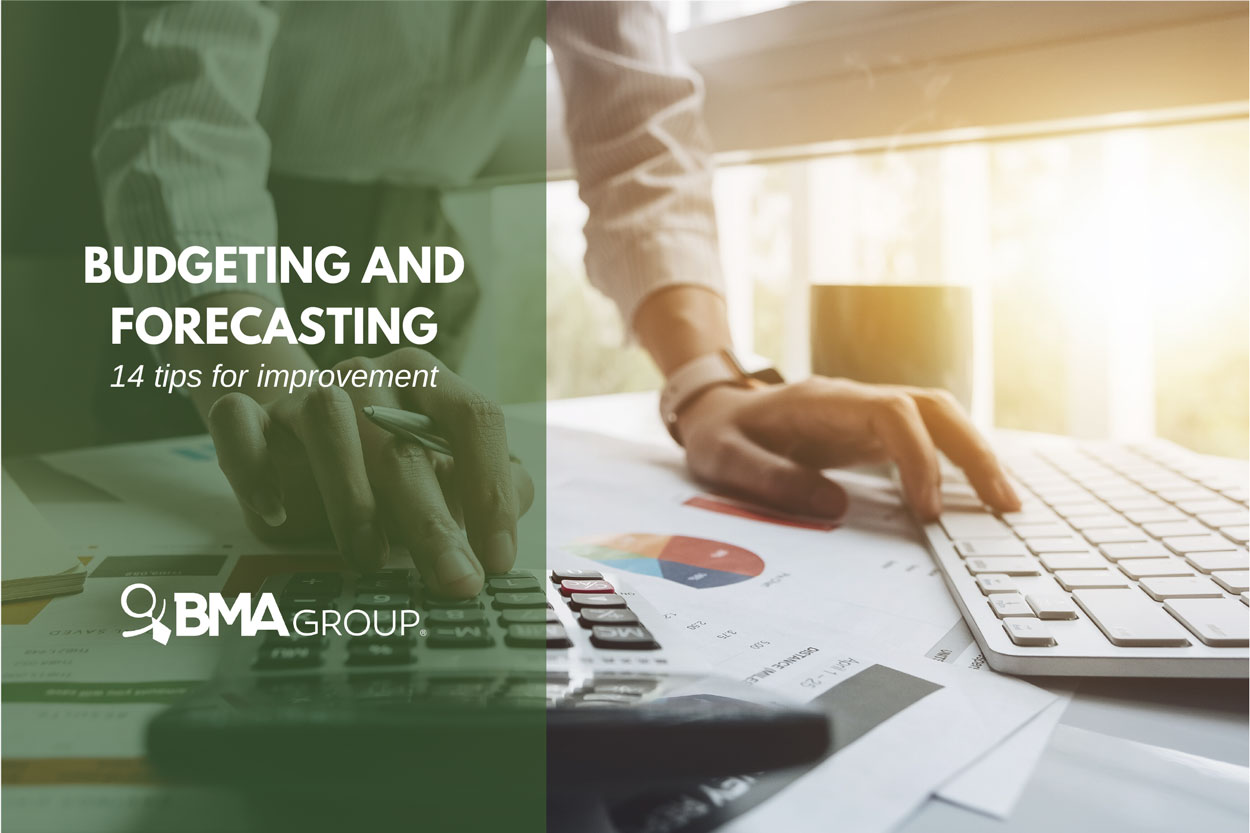14 tips to better budgets and forecasts
Oh, the joys of budgeting and forecasting!
Few things in the business world can compare in complexity and stress-inducing powers.
With so much involved in these processes—stakeholders, vendors, employees, technology, infrastructure—finding the right financial models for your business needs can be a huge challenge. But you must rise up to the challenge. Budgeting and forecasting lay the foundation for an organization’s fiscal health. Neglect them, and your financial forecast will be a gloomy one.
Before we move onto our best practices list, let’s get something straight.
Budgeting vs Forecasting
Whether budgeting and forecasting are the same process or not has been a source of debate among financial professionals for years. Both are valuable tools when planning and grading a company’s financial health, but although they’re often used interchangeably, they complement rather than substitute each other.
Budgeting
Budgeting is the process of creating a plan or estimate of costs, revenues and resources during a prior year to manage financial conditions and goals of the coming year. It works as a financial guide or planner.
Forecasting
Forecasting compares the budget to the company’s current financial direction to predict if the company will meet, exceed or fail to meet the expectations set by the budget. This process attempts to forecast future outcomes based on past events and management insight.
In other words: The budget sets your organization’s goals, and the forecast defines its expectations. Both tools are necessary to run a successful business.
An extreme sport
CEOs and CFOs frequently struggle with how aggressive they should be when planning their budgets. They want to grow as quickly as possible, so they’re inclined to aim high. But if they aim too high, they can miss and lose face with their stakeholders. If they aim too low, they risk stagnation, lower valuation and leave the door open for competitors. How do you balance these two extremes?
14 Budgeting and forecasting best practices
1. Automate
What tools are you currently using? Are you getting the most out of them? Whether you’re using spreadsheets or any other budgeting or forecasting application, it’s worth your time and money to learn your system inside out, with all of its features. Excel users often stick to the tip of the iceberg, failing to take advantage of most (up to 95 percent!) of the package’s features. These features matter. Small changes can make a big difference in usability, accuracy and speed. Consider every use and every user.
2. Be realistic
To be successful, budgets and forecasts need to reflect reality. Instead of being set in stone, budgets should be updated as frequently as needed to reflect economic, organizational and other outside variables. Static, multi-year budgets turn useless when faced with major changes or material deviations, particularly when a company hasn’t established an efficient process for evaluating the cause of these changes and adjusting the budgets and forecasts accordingly. Always keep in mind the end product from the start while tailoring the approach and workload to reality.
3. Employ driver-based metrics
Counting rubber bands, paper clips and smartphones is a waste of time and unlikely to improve results. Using driver-based metrics you can budget laptops, for example, based on employee counts instead of counting each computer individually. Driver-based metrics are quicker, easier and more consistent, and they enable you to focus on areas where insight can actually improve business performance.
4. Be honest
Keeping your stakeholders happy is always a priority, but you should come clean if your company is not meeting its budget. Then you can regroup and re-forecast to correct monetary issues, cut expenses and grow the top line.
5. Improve visibility
Traditional line-item budgeting doesn’t adequately link financial investments to results or outcomes, limiting the ability for in-depth analysis and understanding of the real return of investment for a line of business or initiative. Consider implementing a performance-based framework that allocates resources to specific objectives or activities based on SMART metrics. This framework will provide increased visibility into how financial decisions translate into results.
6. Use iterative group discussions
Budgets are often put together at the very last minute to meet artificial deadlines. It’s an annoying approach that in the end doesn’t accomplish much. The best budgeting process narrows broad goals into specific business plans and metrics through iterative group discussion, but only after initial metrics and numbers are generated by the groups responsible for each area. Successful organizations promote constructive communication and provide a narrative to support the numbers.
7. Accounting structures matter
Budgets are typically developed using the same account structure as the general ledger because that’s how they’re usually tracked. However, this approach fails at representing how the business is actually run. There are two additional structures a budget must contain:
- The planning structure – which identifies the major strategies and priorities to be executed
- The reporting structure – which describes how the business will change under different scenarios
All three accounting structures are necessary to develop and manage budgets.
8. Cater to the big picture
Traditional budgets are created based on requests from competing stakeholders, each justifying their projected expenditures based on their departmental needs rather than the overall goals of the company. This method eventually leads to an extended arbitrary decision-making process that cannot be objectively supported or justified. A performance-based evaluation framework helps establish concrete targets and priorities based on this year’s strategic goals and communicate those targets to all stakeholders involved in the budget process. It also allows the company to make quicker decisions and minimize budget negotiation issues arising from competing interests and priorities.
9. Avoid too many details
More details doesn’t mean more accurate. Too much or not enough detail can hinder your budgeting and forecasting processes. Excess detail can cause an overload of information, slow the process down and result in more technical errors, while a lack of detail can lead to miscalculations and material errors. The best practice is to focus on detail where it matters and to plan in more detail for the short-term and less detail further out, unless your predictive capabilities are proven and your budget assumptions are not subject to volatility.
10. Consider what-if scenarios
In an unstable and sometimes volatile marketplace, drastic changes in resource levels, budget constraints and strategies are inevitable. A flexible budget that takes into account performance under alternative what-if scenarios will serve your company better than one that ignores the future and invests too much time detailing the budget based on what happened in the past.
11. Shorten your budget cycle
Budgeting typically uses up 10 to 15 percent of a company’s time. It takes five to eight months to complete the full cycle in large organizations. While budgeting time varies by company size and complexity, a long planning cycle means you are trying to predict events that are too far in the future. To be timely and relevant to current conditions, your budget should take no more than 30 days to prepare.
12. Adopt analytics
Using analytics technology can greatly improve the budgeting, forecasting and performance management capabilities of an organization. Analytics speed up the decision-making process by making your data more accessible. It also highlights trends and exceptions, fosters a common understanding of the various drivers of performance and their relationship to future outcomes, and helps develop new insights based on the extensive use of data, predictive modeling, and statistical and quantitative analysis.
13. Include non-financial data
When preparing your budget, consider the impact of non-financial data such as:
- Efficiency metrics
- Customer conversion and retention rates
- Employee productivity rates
- Customer support tickets
- Average time to hire
- Other relevant non-financial data
According to research by FSN and Workday on planning, budgeting and forecasting, more than half of CFOs and senior executives who make good use of non-financial data are able to forecast within 90 to 95 percent accuracy. They’re also twice as likely to be able to forecast beyond a 12-month window compared with execs not using non-financial data.
14. Look at past performance
Lastly, no budgeting or forecasting process would be complete without revisiting the past. While the past doesn’t automatically determine the future, past performance can be a strong indicator of future performance.
Walk the talk
Last year you probably promised yourself you would set aside time to fix your organization’s budgeting and forecasting processes so that this year they would run more smoothly. Chances are that, like many in your position, you weren’t able to keep this promise.
If you did, keep on the good work! If you didn’t, you have an opportunity to not make the same mistake again. You cannot fix everything at once, but you can take small steps toward the best practices we just covered. Schedule time to think about it and make some improvements. You can do it—one step at a time.

